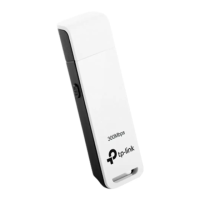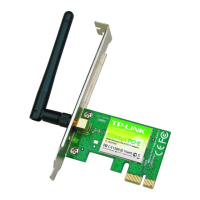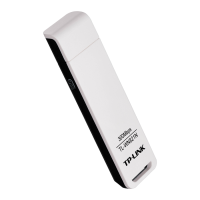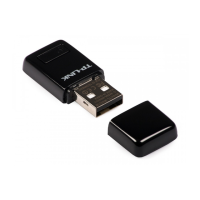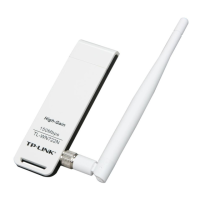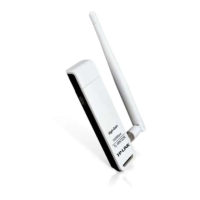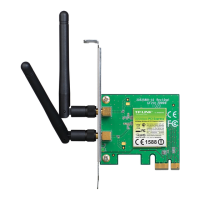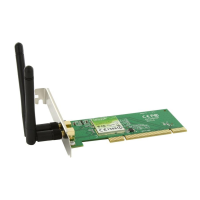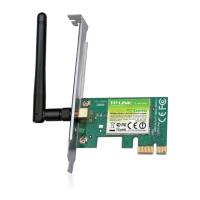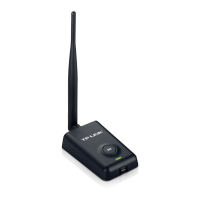Do you have a question about the TP-Link TL-WN321G and is the answer not in the manual?
Provides a general description of the wireless USB adapter's capabilities.
Lists the key capabilities and standards supported by the adapter.
Explains the function of the LED indicator on the adapter.
Details how to physically connect the USB adapter to the computer.
Guides the user through installing the necessary drivers and utility software.
Provides instructions for removing the installed driver and utility software.
Covers creating, editing, deleting, and activating network connection profiles.
Explains how to scan for available wireless networks and connect to them.
Details advanced settings for optimizing wireless performance and features.
Covers viewing transmit/receive statistics and using Quick Security Setup.
Explains using Windows' built-in tools for wireless configuration.
Basic settings for operating the adapter as a soft Access Point.
Manages MAC address filtering and displays connected stations.
Covers viewing system events and transmit/receive statistics in AP mode.
Displays version information for the adapter and utility in AP mode.
Step-by-step guide for setting up the adapter for PSP online gaming.
Defines technical terms related to wireless networking.
Outlines the technical specifications and physical environmental details.
Provides a general description of the wireless USB adapter's capabilities.
Lists the key capabilities and standards supported by the adapter.
Explains the function of the LED indicator on the adapter.
Details how to physically connect the USB adapter to the computer.
Guides the user through installing the necessary drivers and utility software.
Provides instructions for removing the installed driver and utility software.
Covers creating, editing, deleting, and activating network connection profiles.
Explains how to scan for available wireless networks and connect to them.
Details advanced settings for optimizing wireless performance and features.
Covers viewing transmit/receive statistics and using Quick Security Setup.
Explains using Windows' built-in tools for wireless configuration.
Basic settings for operating the adapter as a soft Access Point.
Manages MAC address filtering and displays connected stations.
Covers viewing system events and transmit/receive statistics in AP mode.
Displays version information for the adapter and utility in AP mode.
Step-by-step guide for setting up the adapter for PSP online gaming.
Defines technical terms related to wireless networking.
Outlines the technical specifications and physical environmental details.
| Wi-Fi band | Single-band (2.4 GHz) |
|---|---|
| Full duplex | Yes |
| Ethernet LAN | No |
| Frequency range | 2.4 - 2.4835 GHz |
| Security algorithms | 128-bit WEP, 64-bit WEP, WPA, WPA-PSK, WPA2, WPA2-PSK |
| Maximum data transfer rate | 54 Mbit/s |
| Connectivity technology | Wireless |
| Chipset | Realtek |
| Dimensions (WxDxH) | 86.5 x 24 x 10 mm |
| Compliance industry standards | CE, FCC, RoHS |
| Storage temperature (T-T) | -40 - 70 °C |
| Operating temperature (T-T) | 0 - 40 °C |
| Storage relative humidity (H-H) | 5 - 90 % |
| Operating relative humidity (H-H) | 10 - 90 % |
| Compatible operating systems | Windows 7(32/64bits), Windows Vista(32/64bits), Windows XP(32/64bits), Windows 2003/2000 |


